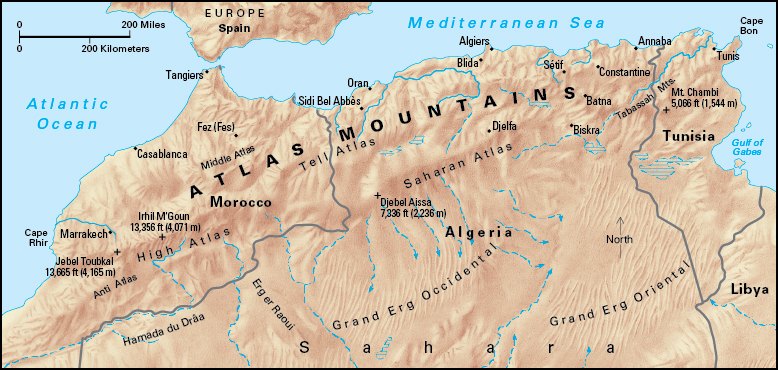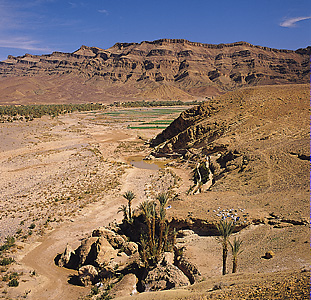Atlas Mountains extend for about 1,500 miles (2,400 kilometers) across northwestern Africa. They run from Cape Rhir on the Atlantic Ocean to Cape Bon on the Mediterranean Sea and cross parts of Morocco, Algeria, and Tunisia. They were named for Atlas, the Greek Titan (see Atlas).

The Atlas Mountains are made up of several chains that run from southwest to northeast. The southern chains are the High, or Haut, Atlas; the Middle, or Moyen, Atlas; and the Anti Atlas in Morocco and the Saharan Atlas in Algeria. The southern and northern chains are separated by high plateaus. The northern chains, which rise along the Mediterranean coast, are the Tell Atlas in Algeria and the Tunisian Atlas. The highest peaks in the Atlas Mountains include Jebel Toubkal (13,665 feet, or 4,165 meters) and Irhil M’Goun (13,356 feet, or 4,071 meters) in Morocco’s High Atlas.

Phosphate rock, iron ore, and manganese are mined in the Atlas Mountains. Plant life of the northern regions resembles that of Mediterranean Europe. Some sections are heavily forested. Esparto (alfa grass) grows on the high plateaus. It is used to make fiber, paper, and rope. Only scrubby vegetation grows on the southern slopes.
